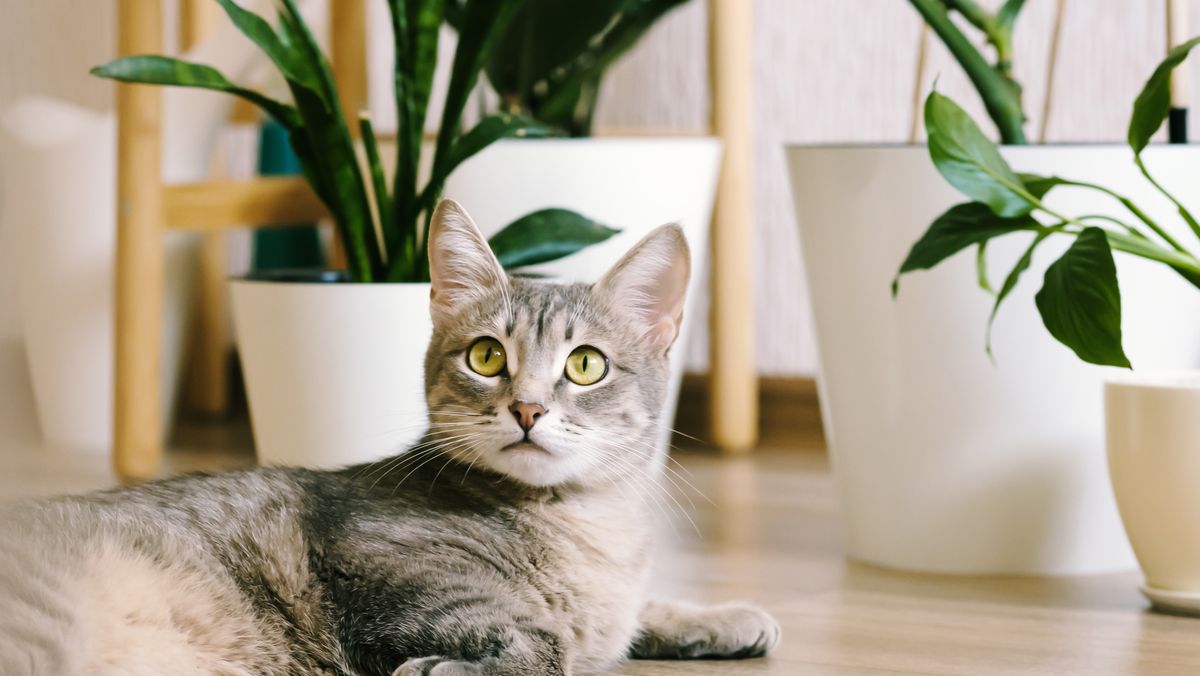
Indoor trees bring a touch of nature’s beauty into our homes, enhancing aesthetics and contributing to a healthier indoor environment. However, for cat owners, ensuring the safety of their feline companions is paramount.
I. Introduction
A. The Appeal of Indoor Trees Indoor trees not only add visual appeal to interior spaces but also provide numerous health benefits, such as improving air quality and reducing stress levels. Their lush foliage and graceful forms create a soothing ambiance that enhances any room.
B. Concerns About Safety for Cats Cat owners often face concerns about the safety of indoor trees, as some plant species may be toxic to cats if ingested. Ensuring that indoor trees are safe for feline companions is essential for maintaining a healthy and harmonious living environment.
C. Exploring Low Light Options Fortunately, there are several low light planst varieties that are safe for cats, allowing pet owners to enjoy the beauty of indoor trees without compromising their furry friends’ well-being.
II. Non-Toxic Low Light Indoor Trees
A. Areca Palm
- Description and Characteristics: The Areca Palm is a graceful indoor tree with feathery fronds and a tropical appearance. It thrives in low light conditions and adds a touch of exotic elegance to indoor spaces.
- Care Requirements: Areca Palms require indirect sunlight and regular watering to maintain optimal health. They prefer well-draining soil and benefit from occasional misting to increase humidity levels.
- Benefits for Indoor Spaces: Besides being safe for cats, Areca Palms are known for their air-purifying properties, making them an excellent choice for enhancing indoor air quality and promoting a healthier living environment.
B. Parlor Palm
- Features and Appearance: The Parlor Palm is a compact indoor tree with delicate, arching fronds and a compact growth habit. It thrives in low light conditions and is easy to care for, making it ideal for beginner plant enthusiasts.
- Maintenance Tips: Parlor Palms prefer indirect sunlight and moderate watering, allowing the soil to partially dry out between waterings. They tolerate low humidity levels and are relatively pest-resistant, making them a low-maintenance indoor tree option.
- Advantages as an Indoor Tree: Parlor Palms are safe for cats and provide a lush, green accent to indoor spaces. They are non-toxic to pets and humans, making them a popular choice for households with furry companions.
C. Money Tree
- Attributes and Growth Habits: The Money Tree, also known as Pachira aquatica, is a unique indoor tree with braided trunks and glossy, palmate leaves. It thrives in low light conditions and is believed to bring good luck and prosperity.
- Care Guidelines: Money Trees prefer bright, indirect light and well-draining soil. They require regular watering, allowing the soil to dry out slightly between waterings. Pruning may be necessary to maintain a compact growth habit and remove dead or damaged foliage.
- Positive Attributes for Cat-Friendly Environments: Money Trees are non-toxic to cats and provide a visually appealing accent to indoor spaces. Their unique appearance and symbolism make them a popular choice for cat-friendly households seeking to add a touch of elegance to their décor.
III. Safety Measures for Indoor Trees and Cats
A. Location and Accessibility
- Choosing Safe Placement: Place indoor trees in areas that are inaccessible to cats or elevated out of reach. Avoid placing trees near furniture that cats can climb to access plants.
- Creating Elevated Spaces: Provide alternative elevated spaces for cats to perch, such as cat trees or shelves, to deter them from climbing indoor trees.
- Monitoring Interactions: Supervise interactions between cats and indoor trees, especially during the initial introduction period. Redirect cats’ attention to alternative activities if they show interest in climbing or nibbling on plants.
B. Training and Deterrents
- Training Cats to Avoid Trees: Use positive reinforcement training techniques to teach cats to avoid indoor trees. Reward desirable behaviors and discourage undesirable behaviors, such as chewing or scratching plants.
- Using Citrus Scents as Deterrents: Cats are repelled by the scent of citrus fruits. Place citrus peels or spritz citrus-scented spray around indoor trees to discourage cats from approaching or nibbling on plants.
- Providing Alternative Cat-Friendly Spaces: Create designated areas for cats to explore and play, equipped with safe and engaging toys and activities. Encourage cats to use these spaces instead of climbing or interacting with indoor trees.
C. Regular Maintenance and Inspection
- Pruning and Trimming: Regularly prune indoor trees to remove dead or damaged foliage and maintain a tidy appearance. Trim branches that may be within reach of cats to prevent them from accessing plants.
- Checking for Toxicity: Familiarize yourself with the toxicity levels of indoor trees and monitor cats for signs of ingestion or adverse reactions. Consult with a veterinarian if you suspect that your cat has ingested a toxic plant.
- Ensuring Soil Safety: Use non-toxic soil amendments and fertilizers to ensure the safety of indoor trees for cats. Avoid using chemicals or pesticides that may be harmful if ingested by pets.
IV. Other Considerations for Cat-Safe Indoor Trees
A. Cat-Friendly Plant Selection
- Researching Non-Toxic Options: Conduct research to identify indoor trees that are safe for cats and compatible with your home environment. Consult reputable sources and plant databases to gather information about non-toxic plant species.
- Avoiding Plants with Potential Risks: Exercise caution when selecting indoor trees and avoid species known to be toxic to cats, such as lilies, philodendrons, and jade plants. Opt for non-toxic alternatives to minimize the risk of accidental ingestion.
- Consulting with Veterinarians: Seek guidance from veterinarians or animal care professionals if you have concerns about the safety of indoor trees for cats. Veterinarians can provide valuable advice and recommendations based on your cat’s individual needs and health status.
B. Environmental Enrichment for Cats
- Providing Cat-Safe Plants: Incorporate cat-safe plants into your indoor environment to enrich your cat’s sensory experience and promote physical and mental stimulation. Choose non-toxic plants that are safe for cats to nibble on or interact with.
- Interactive Play and Engagement: Engage cats in interactive play sessions and provide stimulating toys and activities to prevent boredom and encourage healthy behaviors. Rotate toys regularly to maintain cats’ interest and prevent overstimulation.
- Creating Safe Retreats: Designate quiet, secluded areas where cats can retreat and relax away from household activity. Provide cozy bedding, hiding spots, and vertical perches to accommodate cats’ natural behaviors and preferences.
C. Conclusion
- Balancing Safety and Enjoyment: By selecting cat-safe indoor trees and implementing safety measures, you can create a harmonious living environment that benefits both cats and plant enthusiasts.
- Creating a Harmonious Indoor Environment: Foster a sense of harmony and well-being in your home by incorporating cat-safe indoor trees and creating enriching spaces for your feline companions.
- Enjoying the Benefits of Low Light Indoor Trees: Embrace the beauty and benefits of low light indoor trees while ensuring the safety and well-being of your beloved cats. With careful selection and proactive management, you can create a cat-friendly indoor oasis that enhances both your home decor and your pet’s quality of life.


